
 Deep tissue massage is growing in popularity worldwide as one of the most effective forms of massage when it comes to curing chronic pain in your muscles, exercise recovery, and sports rehabilitation, as well as for purging toxins from your body..
Deep tissue massage is growing in popularity worldwide as one of the most effective forms of massage when it comes to curing chronic pain in your muscles, exercise recovery, and sports rehabilitation, as well as for purging toxins from your body..
It is a very popular form of massage therapy that involves utilizing slow, controlled strokes and firm pressure to affect deep layers of muscle and surrounding connective tissue. It’s commonly used for treating serious or chronic pain and aches, as well as contracted areas like stiff necks, lower back pain, leg muscle tightness, tight upper backs, and/or shoulder soreness.
Just like pretty much any other massage, deep tissue massages use a number of techniques that can help your sore muscles repair themselves and eliminate your pain. With a deep tissue massage, the technique differs from other massage techniques, because the masseuse will apply more pressure to certain areas of your body in an attempt to reach the very deepest layers of tissue surrounding your muscles (these areas are called “fascia”) as well as your deeper muscle tissue.
The ultimate purpose of this is to break away your scar tissue (or “adhesions”) at the heart of your muscles that could either have been caused by injury or constant wear and tear on those muscles.
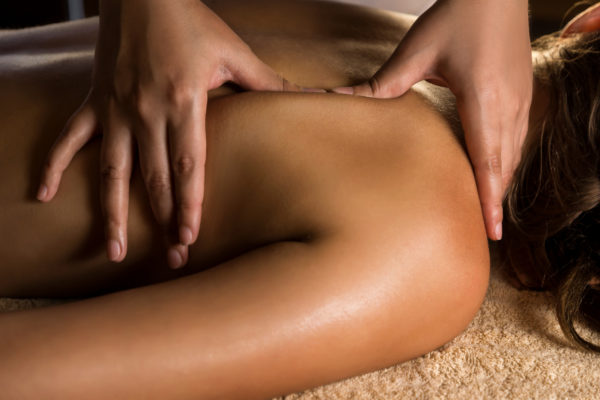
The History Of Deep Tissue Massage
Even though the Ancient Greeks and Egyptians were the first to discover the healing power of massage, they aren’t credited with the version of deep tissue massage that is widely used nowadays.
By the late 1800s, the concept of deep tissue massage was adopted in Canada and in the United States. Deep tissue massage was used for decades throughout both countries, but solid guidelines and procedures weren’t established until the middle of the twentieth century.
Therese Phimmer, a Canadian doctor, is the one credited with establishing deep tissue massage as we know it today. Her book, “Muscles – Your Invisible Bonds,” became the cornerstone of the treatment in the medical world and was used as a how-to manual for many of the earliest Canadian and American massage therapists. Phimmer states that she used a daily regimen of deep tissue massages to cure paralysis in her legs. Her personal experience and detailed book gave her the momentum needed to open her own clinic in 1949.
The History Of Deep Tissue Massage
Overall, deep tissue massage therapy can be compared to Swedish massage therapy, but the deeper pressure found in deep tissue massage is beneficial in releasing chronic muscle tension. The focus of deep tissue massage is on the deepest layers of your tissues, muscles, and fascia.
The Journal of Alternative and Complementary Medicine found in a study that people’s blood pressure fell after just one 45 minute to hour-long deep tissue massage! Additionally, a meta-analysis in the Journal of Clinical Psychiatry from 2010 found that types of massage like deep tissue or bearing similarities to it can reduce stress hormone levels and heart rate.
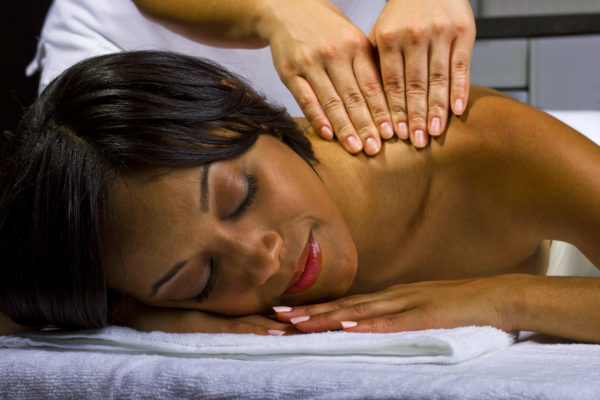
It can also boost your mood and relaxation by causing the oxytocin and serotonin to release throughout your body.
Deep tissue massage therapy typically works on fixing or curing a specific condition, such as the rehabilitation of an injury or easing chronic pain and aches.
It can typically be used to effectively treat the following:
– Lack of mobility/ range of motion
– Severe lower back pain
– Injury recovery and rehabilitation
– Repetitive strain injuries
– Issues with your posture
– Muscle tension
– Upper back pain
– Neck pain
– Osteoarthritis pain
– Sciatic nerve pain
– Fibromyalgia
– Tennis elbow
– Piriformis Syndrome (buttock spasms and pain)
If you are in need of a massage to prevent sports injury or to aid in muscle recovery after intense athletic activity, consider getting a deep tissue sports massage.
It’s also important to be practical about what just one deep tissue massage session will achieve for your body. A lot of people might ask for the masseuse to push harder, thinking that if there’s enough pressure, then all of the knots in their body will disappear after just one hour. That’s unrealistic.
While deep tissue massage can work wonders for your pain and injuries, undoing chronic knots and tension built up over a lifetime of labor and/or stress is best achieved with a regimen that includes exercise, improvement to your posture and ways of moving, relaxation techniques and regularly scheduled massage appointments.

What To Expect During Your Deep Tissue Massage
Some of the strokes will feel similar to or the same as some used in Swedish massage therapy, but they are still very distinct techniques.
The primary goal of deep tissue massage strokes and techniques is to break up scar tissue and break down muscle knots or bands of painful, rigid tissue that can inhibit circulation, leading to pain, limited range of motion, and inflammation.
At the start of your deep tissue massage, you’ll feel lighter pressure applied. Generally, this is to warm up your muscles and prepare them for the rest of the therapeutic massage. Afterwards, several techniques could be applied.
This may include stripping (a deep, gliding pressure along the length of your muscle fibers using the elbow, forearm, knuckles, and thumbs) or friction (pressure applied across the grain of your muscle to release adhesions and realign tissue fibers).
Your massage therapist might use their hands, elbows, forearms, knuckles, and/or fingertips during the deep tissue massage. You may be asked to breathe deeply while our masseur works on some of the tighter, tense areas of your body.
Shortly after the massage is completed, you may feel some stiffness or soreness, but it should go away after a day or so. Make certain that you contact your massage therapist if you are feeling pain after the massage. Drinking water may help to ease the recovery.
What To Do Before and After Your Massage
Entering into a deep tissue massage with muscles in a big, twisted ball of tension will do nothing to make the experience any better; in fact, tense muscles can make the whole experience more painful.
Do your very best to unwind your muscles and relax.
This will help our masseuse to achieve the muscle relaxation goals that you are searching for in the long run. It’s also in your best interest to stretch after your massage and try not to overwork your muscles for the day following your session. Give yourself some much needed R & R (rest and relaxation).
As soon as your massage is completed – which should normally take about an hour for deep tissue massages – you might need to ice the areas of your body where the greatest pressure was applied. Doing so will decrease any inflammation and prevent any pain and swelling that you might get from the intense deep pressure.
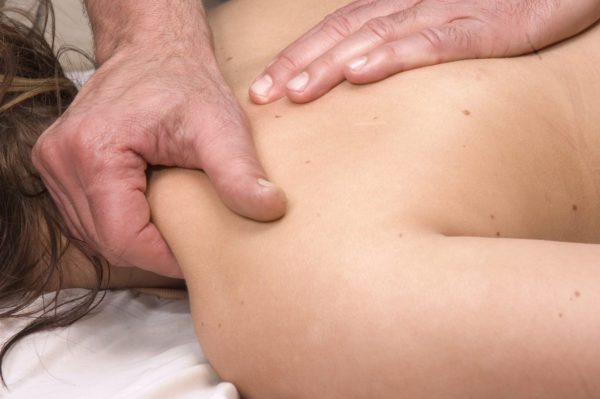
Water, as previously stated, is also another major part of after-massage therapy. Drinking water following any massage is necessary to help flush away toxins, but after a deep tissue massage it’s extremely important.
A lot of people complain about feeling light-headed after a massage and drinking enough water to be properly hydrated can help to reduce that sensation. Also, do not eat a large meal before your massage so you’re not nauseous during or after it. Buffets and pressure don’t mix very well.
Are Deep Tissue Massages Painful?
Deep tissue massages are thorough. At some points during the massage, you may feel some discomfort, or you may even feel some slight pain as the masseur or masseuse works on areas where there are adhesions or scar tissue. Pain isn’t necessarily a good thing, and it’s not a sign that the massage will be effective. Actually, your body might tense up in response to higher levels of pain, making it harder for the therapist to reach deeper tissues and muscles.
If you feel pain during the deep tissue massage, you should tell your therapist right away so that they know what’s going on. At that point, the therapist can make adjustments, switch up the technique, or further prep the tissues if the superficial muscles are tense.
The massage will hurt a little. Okay, well maybe “hurt” is a strong word, but you might feel some discomfort during a deep tissue massage, and potentially even afterwards. This is because various degrees of pressure are being applied to otherwise tight muscles that have issues lying dormant in your body.
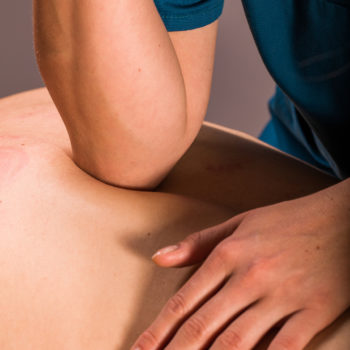
It’s important to note that those everyday twinges of pain in your muscles can go away with just a few simple, yet intense maneuvers during a deep tissue massage. And yes, maybe that does lead to “more pain” per se, but that initial soreness ultimately goes away. Don’t you think that a little bit of temporary pain to ultimately make the rest of the pain go away is worth it?
The Potential Side Effects of Deep Tissue Massage
Bruising: While some clients do experience bruising, it’s important to know that if you therapist is being to rough with you during the massage or causing significant pain, you should let them know so that they can make the proper adjustments.
Blood Clotting: It’s also important to note that a case study published in the Physician and Sportsmedicine reported that a “previously healthy 67-year-old man” developed a venous thromboembolism—a blood clot that forms in the arm, leg, or groin, which travels to the lungs—after regularly receiving vigorous deep tissue massage.
Hepatic hematoma: Hepatic hematoma is a painful liver condition, which The New England Journal of Medicine says has been instigated by deep tissue massage. In this case, a 39-year-old woman received a deep tissue massage, which included the abdomen and right upper quadrant. Within 24 hours, she developed abdominal discomfort, nausea, and pain in her right shoulder. A large hematoma was found in her right hepactic lobe, causing the woman to feel nauseous and have a fever for the following six months.
Droopy Shoulder: In the Archives of Physical Medicine and Rehabilitation, another case study revealed that one client developed spinal accessory neuropathy after a deep tissue massage, causing “scapular winging and droopy shoulder as a result of weakness of the trapezius muscle.”
Give Deep Tissue Massage a Try!
Deep tissue massage isn’t only a massage with deep pressure. The goals of the massage and the techniques that are used are different from a Swedish massage. While deep tissue massage may help with certain conditions, you must remember that massage doesn’t always have to hurt or make your body sore to be effective.
In order to get the most out of your massage, communicate with your massage therapist.
Deep tissue massage is ideal for people who frequently participate in highly physical activities, such as running, basketball, football, soccer, and triathlons, or those who have an injury or chronic pain. If you have a low pain threshold or you’re simply looking for relief of tense muscles, then Swedish massage is gentler and may be a better option.
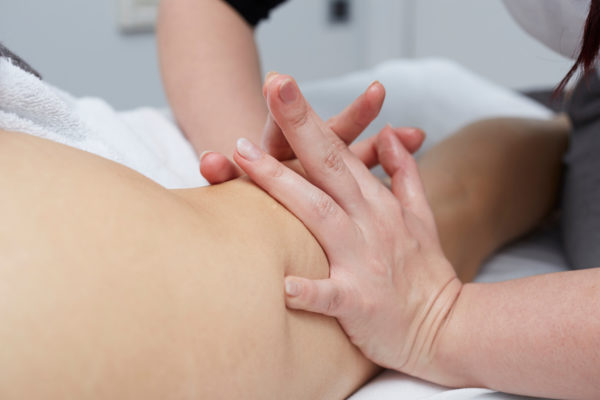
Have you had any blood clots or had recent surgery or medical treatments for terminal illnesses? If so, then you are probably not the best candidate for a deep tissue massage.
It’s also important to not that if you have any skin conditions or you’re prone to feeling an increased amount of sickness, pain, or even a rash after a traditional massage, deep tissue may not be for you; the intensity can worsen those symptoms.
Always check with a medical professional before massage if you have any concerns and have one of our licensed masseuses perform a deep tissue massage.
The benefits that you’ll receive from deep tissue massage beyond helping your muscles are plenty, including reducing stress, lowering blood pressure, and improving flexibility.
Deep tissue massage is definitely worth it, but it will go a lot smoother if you make sure that you’re equipped to handle it first!
We have limited deep tissue appointments available, so call today to reserve yours!
Call (503) 362-1002 or click below to request an appointment online:

I have been very impressed with the knowledge and professionalism shown by the staff and physicians at Whitmire Chiropractic. I have been to several other practitioners in the area and I am very relieved to have at last found a chiropractor I can be comfortable to bring my whole family to. I am finally finding relief for shoulder and neck pain that have plagued me for years. I have already referred this office to several of my friends and will continue to do so. Well Done Dr. Whitmire!! The most thorough and well explained doctor I’ve ever met!

Schedule Appointment
Office Hours
Tues: 9:00am - 7:00pm
Wed: 9:00am - 7:00pm
Thurs: 9:00am - 7:00pm
Fri: 9:00am - 5:00pm
Sat: Closed
Sun: Closed

